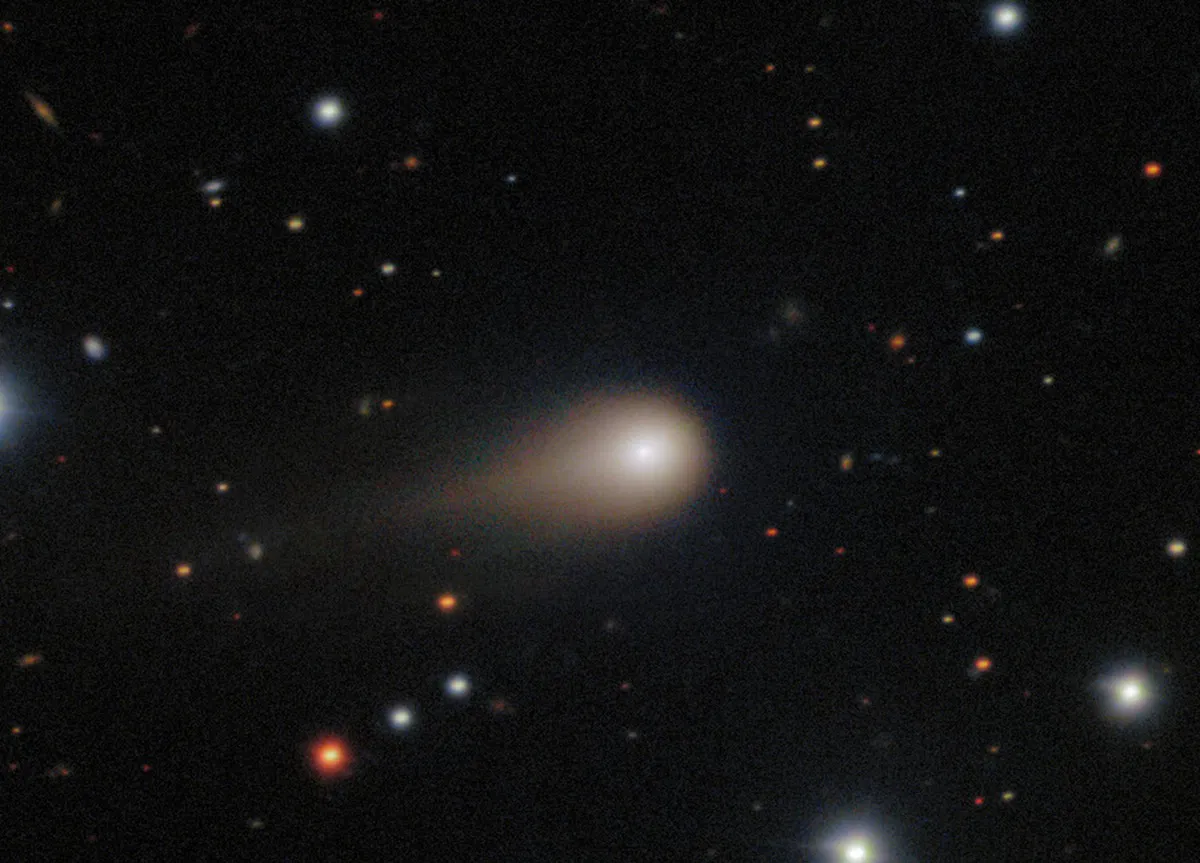Copyright euroweeklynews

Something unusual is happening out there in space. The mysterious object 3I/ATLAS – which we recently reported on at Euro Weekly News – has just made its closest approach to the Sun, and astronomers around the world are paying close attention. The reason? No one is completely sure whether this visitor is just another lump of space rock – or a technological object created by an intelligent civilisation beyond our solar system. A close encounter with the Sun On October 29, 2025, 3I/ATLAS reached its nearest point to the Sun, about 203 million kilometres away. It’s a moment scientists have been waiting for since it entered our solar system, as the object now begins the second half of its long journey back into interstellar space – if nothing unusual happens first. For spacecraft, this point – known as the perihelion – is often the perfect time to accelerate or slow down, using the Sun’s gravity as a slingshot. It’s also the ideal moment, experts say, for a hypothetical mothership to deploy small probes or adjust its course. That’s one reason the object has captured so much attention. Unfortunately, this rare moment can’t be directly observed from Earth, meaning scientists must rely on data rather than visual evidence to learn more about it. That lack of visibility has fuelled speculation that 3I/ATLAS might be more than a natural phenomenon. A Harvard professor raises the alarm Astrophysicist Avi Loeb, who leads Harvard’s Galileo Project, has become one of the most outspoken voices on the mystery. In a recent interview on Fox News, Loeb compared the situation to the Trojan Horse of Greek mythology – an object that looks harmless on the outside but may conceal something unexpected within. He and his colleagues, Omer Eldadi and Gershon Tenenbaum, have even published a white paper urging governments and policymakers to treat the potential threat seriously. Their argument is simple: if an unusually massive object like 3I/ATLAS were in fact a piece of technology, ignoring it could be a mistake. The timing hasn’t gone unnoticed either. The object’s perihelion – its closest approach to the Sun – took place just two days before Halloween, which Loeb himself called “a fitting date to ask whether it’s wearing a cosmic disguise.” A journey across the solar system 3I/ATLAS will continue its path through the solar system for several more months. On November 3 2025, it will pass within 97 million kilometres of Venus, before moving close enough to be seen by the European Space Agency’s JUICE mission as it travels toward Jupiter. Then, just before Christmas, on December 19, it will reach its closest point to Earth – around 267 million kilometres away, assuming it follows a natural gravitational path. “Will it send mini-probes to Earth as Christmas presents for humanity?” Loeb joked in a recent blog post, though his research team plans to take the question seriously. The Galileo Project is already monitoring data from its network of observatories, searching for any signs of unusual activity or unidentified aerial phenomena in the Earth’s atmosphere over the coming months. By March 2026, 3I/ATLAS will approach Jupiter, where NASA’s Juno spacecraft could potentially capture images or even detect radio emissions that might indicate artificial origins. Natural or not? The next few months will tell Scientists believe this stage is critical. If 3I/ATLAS is a natural comet held together by weak forces, its exposure to the Sun’s heat—around 770 watts per square metre – could cause it to break apart into smaller fragments, creating a bright plume of gas and dust. But if it’s technological, as Loeb and others suggest, it might change direction, emit heat, or even release small devices. Some of its unusual characteristics, such as a higher ratio of nickel to iron, have already drawn attention as possible hints of something artificial. In the coming months, astronomers will study how it behaves under solar radiation to determine whether it truly fits the profile of a comet—or whether it defies expectations entirely. Loeb, who also appeared recently on The Joe Rogan Experience, said this kind of curiosity is vital. “We need humility when exploring who else might share our cosmic neighbourhood,” he explained. “It’s better to look closely at what’s out there than to rely on Hollywood’s imagination.” Whether 3I/ATLAS turns out to be an ordinary piece of space debris or something far more advanced, one thing is certain: its visit is forcing scientists—and the rest of us—to think differently about what might be travelling through the vast darkness of space. What is 3I/ATLAS? 3I/ATLAS, officially designated C/2025 N1, is the third confirmed interstellar object ever spotted passing through our Solar System. It was discovered on July 1 2025 by NASA’s ATLAS survey in Hawaii – a system designed to scan the sky every night in search of moving celestial bodies. Unlike ordinary comets that originate in the Oort Cloud, 3I/ATLAS is a true visitor from beyond our Solar System, travelling at an extraordinary speed of around 60 kilometres per second. Scientists have detected a faint tail and changing colours in its coma, signs that it’s an active comet releasing gas and dust as it approaches the Sun. NASA says there’s no danger Despite its interstellar origin, NASA has made it clear that 3I/ATLAS poses no threat to Earth. The comet will come no closer than about 270 million kilometres – nearly twice the distance between Earth and the Sun. In other words, there’s no chance of an impact or even a visible show in our night skies. “You won’t see it, but our spacecraft will,” NASA noted, highlighting that several missions, including the European Space Agency’s JUICE probe, will observe the comet up close. For scientists, this is a rare and exciting opportunity to study a traveller from another star system, not a cause for alarm.



